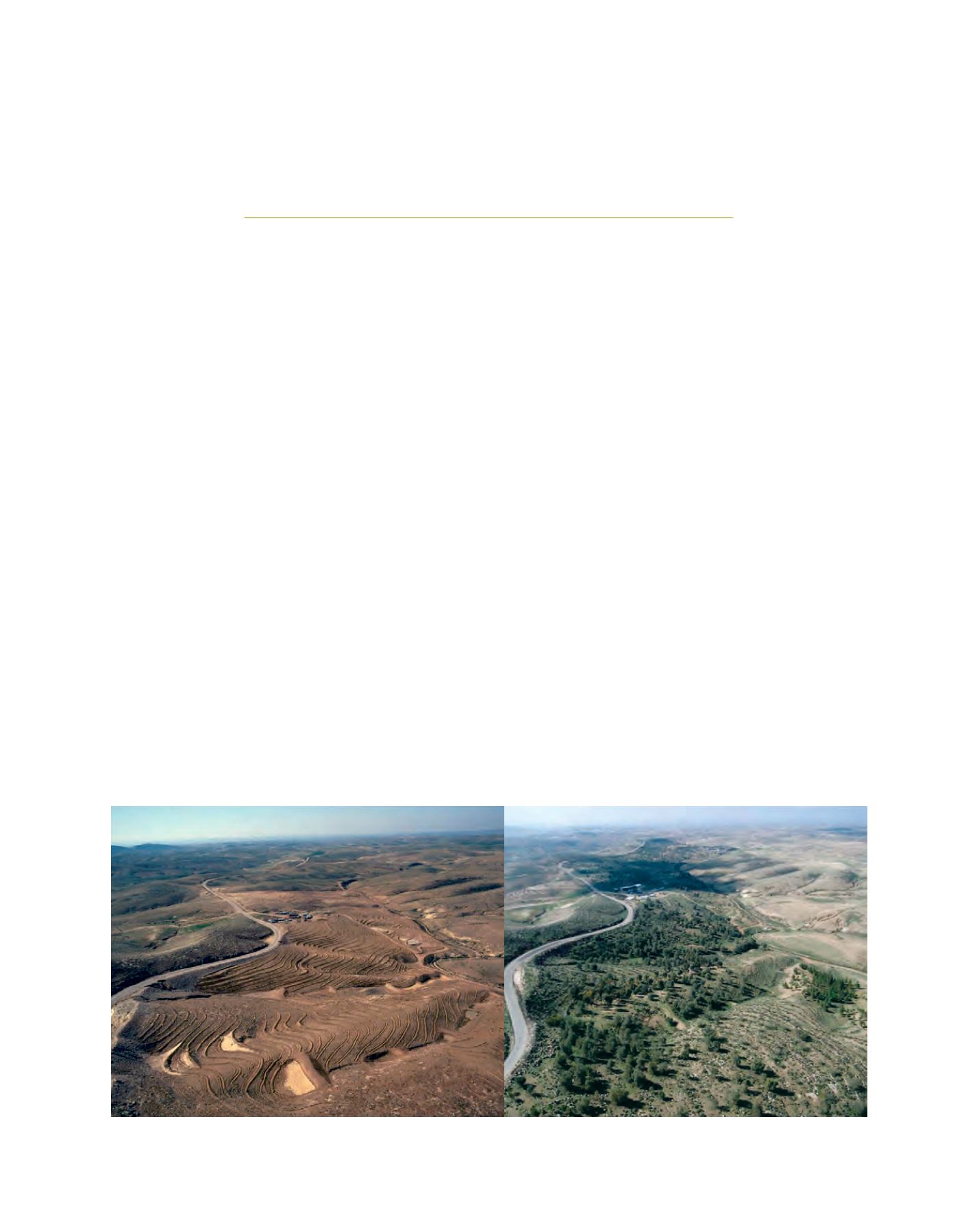

[
] 273
Afforestation in Israel – reclaiming ecosystems
and combating desertification
David Brand, Itzhak Moshe, Moshe Shaler, Aviram Zuk and Dr Joseph Riov,
Department of Forestry, Keren Kayemeth LeIsrael-Jewish National Fund
H
umans have lived in all regions of Israel since before
Biblical times, with varying degrees of success. However,
in the last hundred years, human activities and over-
exploitation of natural resources have produced severe land
degradation, erosion and salination.
Since its establishment in 1948, the State of Israel has embraced
sustainable land management and has adopted public policies
designed to restore, develop and manage its natural resources. About
240 million trees have been planted and regulations have been intro-
duced to control grazing and ensure effective water management. Due
to these activities, Israel is one of the few countries in the world that
has more trees now than it had a century ago.
After the first pioneering stage of afforestation in Israel, which was
initiated at the beginning of the 20th century, the Israeli Forest Service,
Keren Kayemeth LeIsrael (KKL), launched a policy that encouraged the
adoption of sustainable forest management practices for planted forests.
In 1995, the Israeli Government ratified a new National Master
Plan for Forests and Forestry (NMP 22). Approval of this plan
expanded KKL jurisdiction to areas beyond those of the planted
forests, giving a statutory status to around 8 per cent of Israel’s land.
The plan affects 160,000 hectares (ha) of existing and proposed
forest lands, covering approximately 7.3 per cent of Israel’s total
land surface which is 22,000 km
2
. Five categories of forest type were
assigned by the plan as follows: planted forest (65,900
ha, 41 per cent); natural forest (60,000 ha, 37 per
cent); park forest (26,600 ha, 17 per cent); coastal park
forest (4,200 ha, 3 per cent); and riparian plantings
(3,900 ha, 2 per cent). These forest lands are distrib-
uted as follows: 59 per cent in the northern and central
Mediterranean regions and 41 per cent in the semi-arid
southern region.
Following many applied studies related to Israel’s semi-
arid and arid zones, KKL developed advanced methods to
harvest runoff water for the benefit of the trees planted in
these areas. Advanced studies carried out in KKL forests in
the semi-arid region demonstrated that the carbon seques-
tration rate in these forests is similar to that recorded in
temperate forests in central Europe. These findings under-
score the importance of establishing forests in semi-arid
zones to reduce the greenhouse effect in addition to its
contribution to the local residents’ amenity.
KKL forestry operations focus on four main areas:
• Afforestation and reforestation in Mediterranean and
semi-arid zones
• Ecosystem goods and services from planted forests
• Community forests
• International cooperation and capacity-building.
Afforestation in semi arid zone: Hiran Forest 1998 (left), 2008 (right)
Image: KKL Archive
















